
Now we are back in Broome under blue skies it is really good to get out and about in the bush and see what has changed over the wet season. When we left to go to Melbourne it was the time of year that we get rain in Broome and much of the land becomes inaccessible by vehicle, but we have often wandered/waded into the bush in search of birds. Having returned from a wet and cold Melbourne where walks can be risky along the coast it is a joy to be in such warm weather under such blue skies! There is already a bit of haze about from bush fires, but generally it is all blue with low humidity and you can wander for hours without breaking into a sweat! By heading inland a short distance from Broome you come across some taller trees that are away from the coastal strip and cyclonic winds.
Bush near Broome
A track that we like to go down was mostly too wet to drive on earlier this year and as a result of that we walked in to check out an area we know that can flood when there’s a lot of rain. Although we could have easily driven in this week it is much more enjoyable to walk for several hours and enjoy all that the area has to offer. The ground is mostly very dry and very dusty, but the last of the rains allowed for some beautiful native pink flowers to grow. They cover the dry sand and reappear each year after the rains.
Native pink flowers
There is one area that we always stop and explore on this track and it is where we were lucky enough to encounter an Australian Owlet-nightjar in January 2012. Of course, we have never been that lucky since, but it is just the memory of that special time in ours lives that pulls us back to that spot. There are a lot of hollows and trees in that area, but we can always find that special hollow.
The Australian Owlet-nightjar hollow
It was not long and we heard Budgerigars flying overhead and each year is different in Broome. We can go years with very few or even no Budgerigars in the area at all and then other years they can be quite common. It appeared they knew of water and we continued on. It is challenging to find them once they settle in among the green leaves of trees and then trying to photograph them has its challenges. We eventually found a pair of Budgerigars above us and they then started to preen each other.
Pair of Budgerigars
Soon there were larger flocks of them in the foliage and once again it is hard to show green Budgerigars among green foliage. They do not occur in the wild with pink or blue feathers!
Small flock of Budgerigars
As we moved further along the track there were large flocks of Galahs perched high in the trees. Crested Pigeons flew noisily ahead and there was the constant three note call of the Striated Pardalote. The trees were alive with birds and we had Jacky Winter, Willie Wagtail, Paperbark Flycatcher, Diamond Doves, Grey Shrike-thrush, Grey-crowned Babblers, Weebills, White-winged Trillers, Yellow-throated Miners and Mistletoebirds to name a few of the easily observed species along the trail. The sky was busy with Cockatiels flying overhead, which are another species that some years don’t make it so close to Broome. Birds of prey included Nankeen Kestrel, Australian Hobby, Whistling Kite and Black Kite.
Galahs
We followed the track for some time until we came to where there had been water on our previous visit. We had not expected to still find water, so we were pleasantly surprised when we did find a small area that was still flooded from the rains and with a good area of tall grasses and reeds surrounding it. From the bird-life we had experienced so far on the trail there were all indications that there was still some water. Zebra Finch and Long-tailed Finch were present in good numbers as well as Diamond Doves and all of these species require regular water to survive in the harsh outback. We soon found the small area of water and the main problem was a large Brahman Bull had also decided the location was excellent to spend the afternoon. There were several Magpie-larks really close to and on the bull and a Willie Wagtail beneath it. They were no doubt attracted to the shade and the insects around the large animal.
Magpie-lark and Willie Wagtail with a Brahman bull
From a distance we could see several Black-fronted Dotterels and also a lone Common Greenshank that must have decided against migrating into the Northern Hemisphere this year. Straw-necked Ibis wandered the edge of the water looking for food and a White-necked Heron flew out of the reed-beds. There were two White-faced Herons present and one was roosting high up above the water.
White-faced Heron
While we assessed the situation with the bull and how wide a circle we would take to get around the area we had several Australian Pratincoles come in for a drink and several Golden-headed Cisticolas appeared on top of the tall grasses and then promptly dropped back down again. An Australasian Pipit stood on top of a recent cow pat and we made our move. We were keeping our distance when suddenly four small birds flew up from the reeds calling briefly and promptly dropped back in again. We got as far as saying “mannikins” and then the challenge was on! We wanted better views, but we did not want to disturb them unnecessarily. We also did not know how many of them were there hiding and it may just be those four, or it could be more. Mannikins of any sort are rare in the Broome area and so not only did we want to get a better view of them we hoped for some photographic evidence. Suddenly we had them in flight again briefly, but enough to determine that they were in fact Pictorella Mannikins. They were not intending to leave the fresh water supply and ample seeds in the grasses. We continued to circumnavigate the water and avoid any close contact with the bull and we were able to establish that there were in fact seven Pictorella Mannikins and I was able to get a distant photograph of two of the birds.
Pictorella Mannikins
The last time we saw Pictorella Mannikins was over 7 hours drive inland from Broome and they are reliably found at the Halls Creek Poo Ponds. We had never seen them so close to Broome and along with the numbers of Budgerigars and Cockatiels currently present we can expect some variety over the next few months as birds wander in search of fresh water.
It is always enjoyable to get out into the bush along little used tracks and especially when you have a surprise encounter, whether it is an Australian Owlet-nightjar or Pictorella Mannikins!


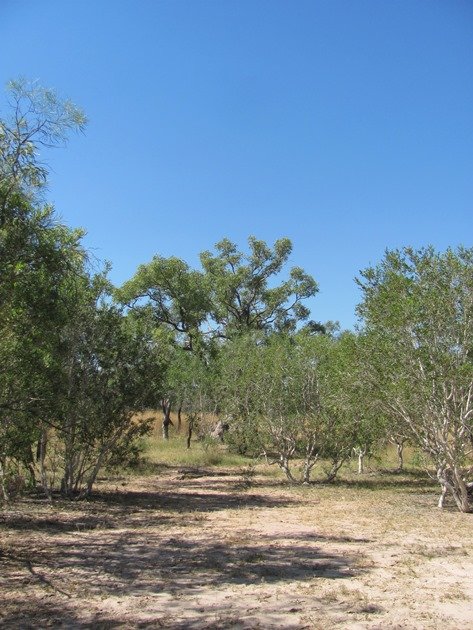
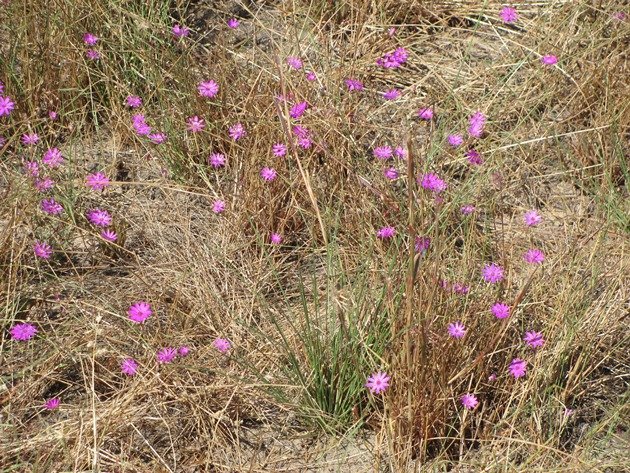
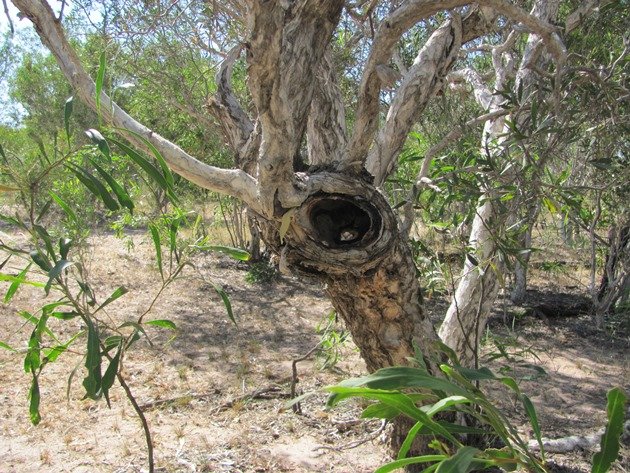
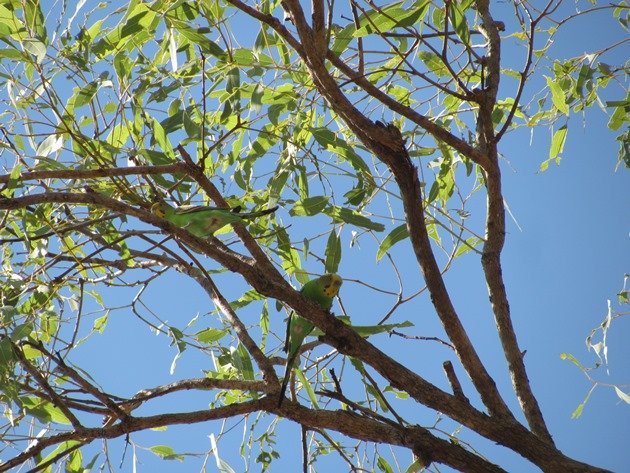
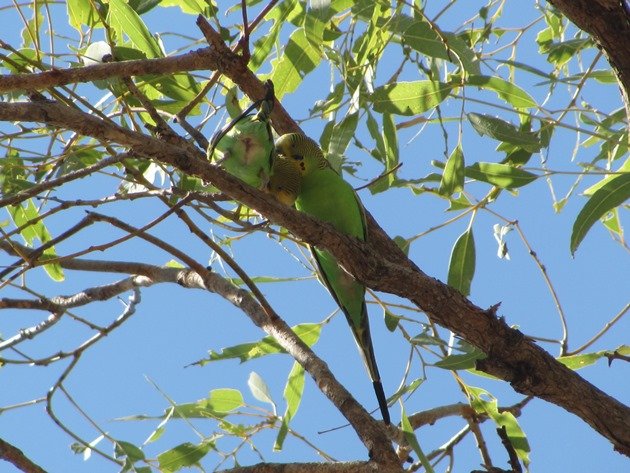

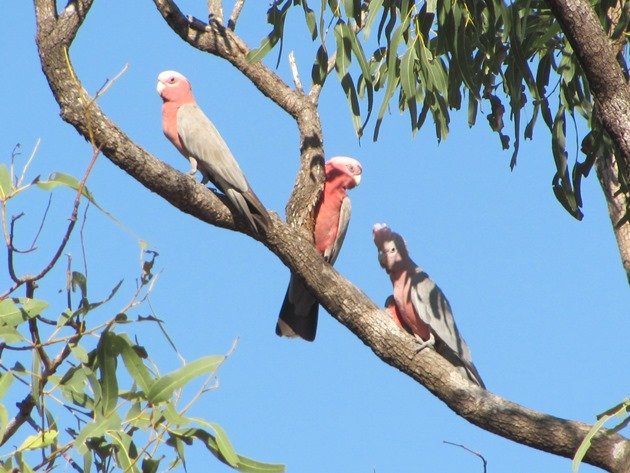
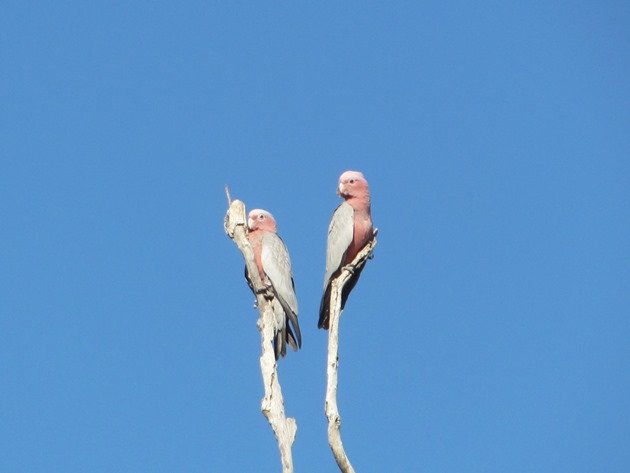
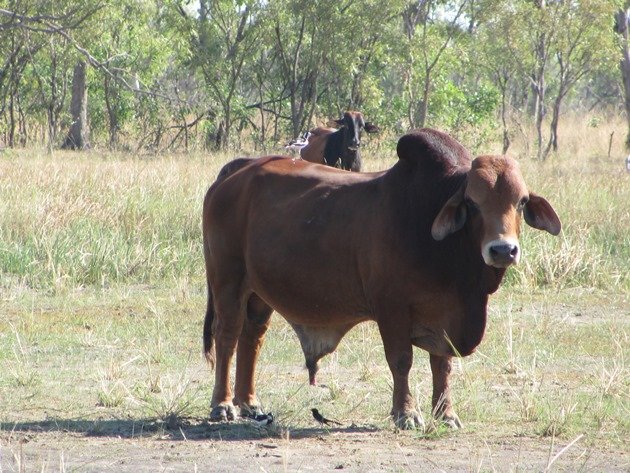
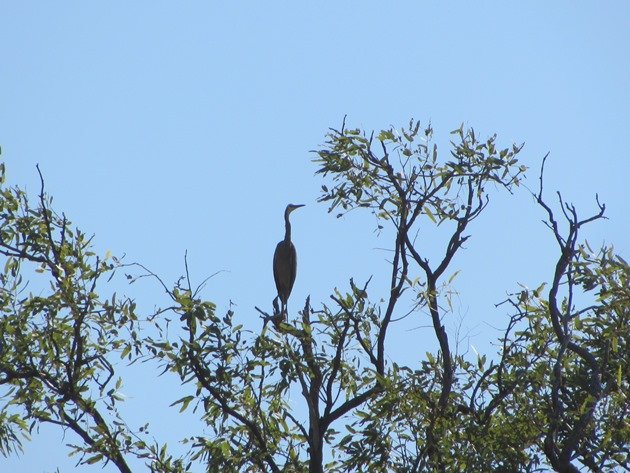
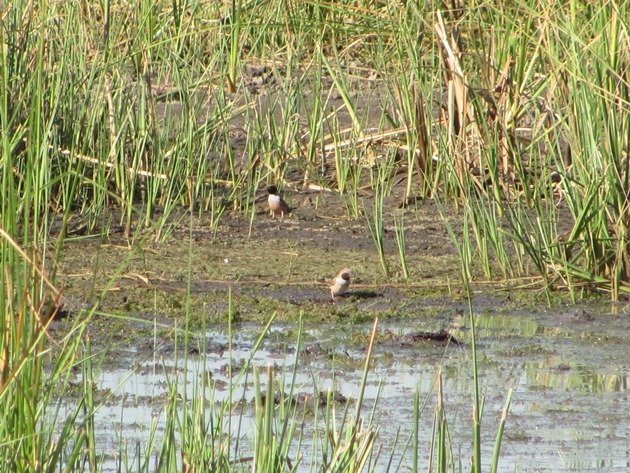











Thinking of a quick getaway in Oz this year… thinking of Broome now!
And why not!? Actually Broome to Kununurra would be a great trip and one we love doing….just camping in the bush and enjoying the birds and other critters! 🙂